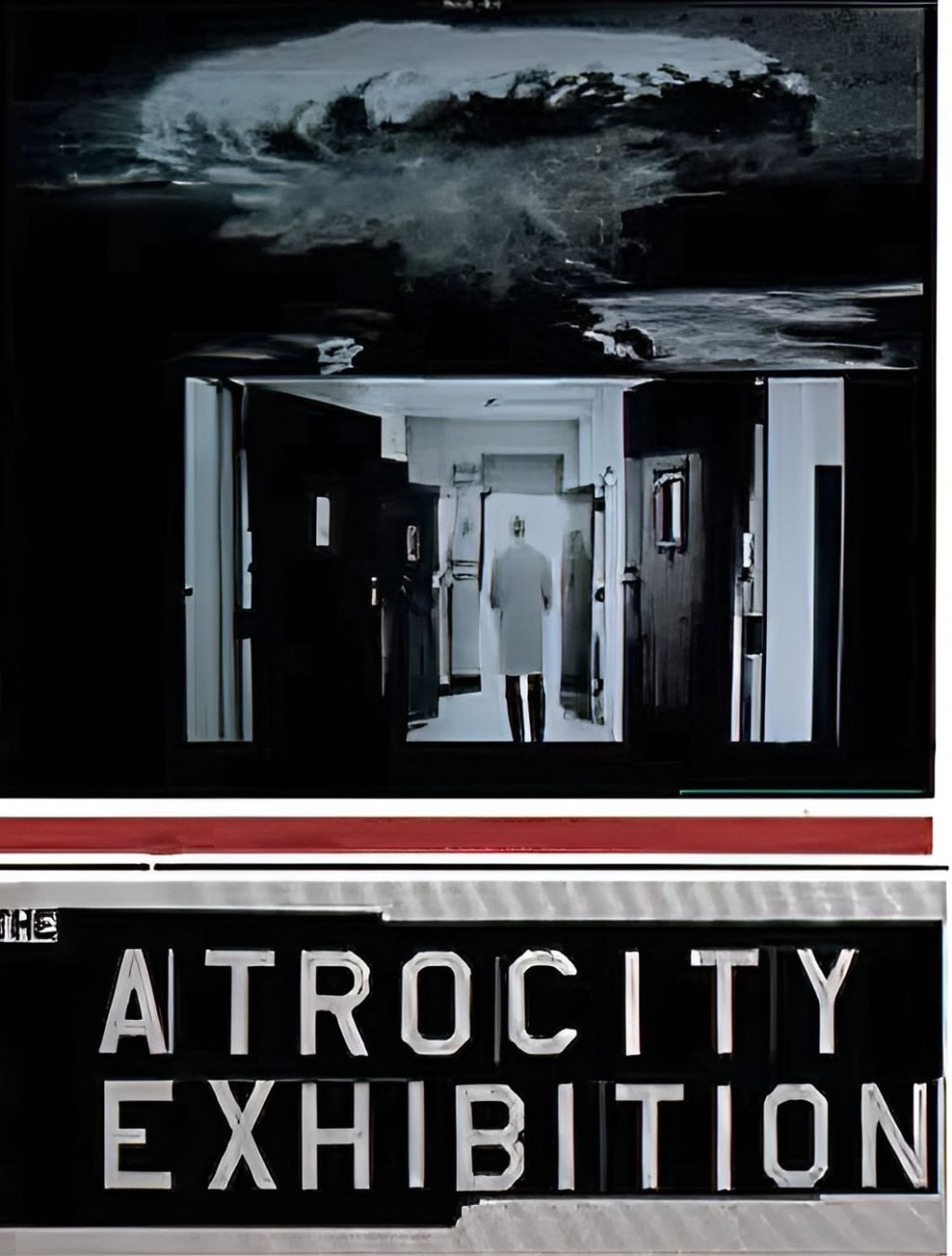
Cult Films and Midnight Movies "From High Art to Low Trash" Vol 1 By Tom Baker
The Sex Kit.
‘In a sense,’ Dr Nathan explained to Koester, ‘one may regard this as a kit, which Talbert has devised, entitled “Karen Novotny” - it might even be feasible to market it commercially. It contains the following items: (1) Pad of pubic hair, (2) a latex face mask, (3) six detachable mouths, (4) a set of smiles, (5) a pair of breasts, left nipple marked by a small ulcer, (6) a set of non-chafe orifices, (7) photo cut-outs of a number of narrative situations - the girl doing this and that, (8) a list of dialogue samples, of inane chatter, (9) a set of noise levels, (10) descriptive techniques for a variety of sex acts, (11) a torn anal detrusor muscle, (12) a glossary of idioms and catch phrases, (13) an analysis of odour traces (from various vents), mostly purines, etc., (14) a chart of body temperatures (axillary, buccal, rectal), (15) slides of vaginal smears, chiefly Ortho-Gynol jelly, (16) a set of blood pressures, systolic 120, diastolic 70 rising to 200/150 at onset of orgasm . . . ’ Deferring to Koester, Dr Nathan put down the typescript. ‘There are one or two other bits and pieces, but together the inventory is an adequate picture of a woman, who could easily be reconstituted from it. In fact, such a list may well be more stimulating than the real thing. Now that sex is becoming more and more a conceptual act, an intellectualization divorced from affect and physiology alike, one has to bear in mind the positive merits of the sexual perversions. Talbert’s library of cheap photo-pornography is in fact a vital literature, a kindling of the few taste buds left in the jaded palates of our so-called sexuality.”
― J.G. Ballard, The Atrocity Exhibition
The Atrocity Exhibition is not an easily digestible film. Insomuch as it is a literal adaptation of J.G. Ballard's avant-garde classic, it is essentially a plotless visual meditation on various themes, emerging from its surrealistic morass of visuals, from time to time, to convey an image shocking and inscrutable when proffered against the rest of the film. Its central theme, as in the novel, is the ever-shifting characterization of a man variously referred to as Talbot/Traven/Travers (played by Victor Slezak), partly inspired, or so Ballard claimed, by the mysterious writer "B.Traven", and his assembling of "terminal documents": i.e. "final statements" on the condition of mankind as he moves, inexorably, toward World War 3. And, of course, his final doom.
The film begins in a university or institute, but in the dream-like shifting of place and time, when one concept of "place" is likely to morph into another, albeit tangentially related locale, it also seems to be a vast, military test range, an airstrip, a city-scape replete with billboard images of atrocities juxtaposed with blowups from fashion models. Travens/Travers/Whoever, the weird, brooding doctor on the verge of neurotic insanity, lectures his students on the "notional child-rape of Che Guevarra" while outlining the shadow of his girlfriend against the wall while she sits on the toilet. A series of geometric cubes laid out in front of him are "fusing sequences for a doomsday device." He etches cryptic ideograms into a wall, wondering at the inscrutable nature of the communication signals (perhaps an extraterrestrial distress code) he is trying to work out as the patterns of his own "trip through consciousness."
One may well relate our trip through consciousness, or pattern programming, to a kind of pareidolia, a way to organize the stimuli so that it creates a logical (read: "survivable") pattern, one in which we are affirmed in our notion of relative security in an environment that makes logical sense--or one that, at the very least, we can draw logical inferences from. Stripped of context, denuded of meaning, Marilyn Monroe (whose image is seen often here) can be thrown up against footage of the napalming of women and children during the Vietnam War, and the incongruent absurdity of one image simply emphasizes that of another. The film beggars the question: In a society perched on the edge of thermonuclear annihilation, what constitutes "insanity" in the individual? In a society that can cover vast, barbaric actions with the cosmetic facial reconstruction of pop culture celebrity, what pray to tell, defines the individual as "mad?"
Indeed, at one point "Karen Novotny," a tall, glamorous, fashion model-like woman played by professional model Anna Juvander, enters a surgical theater in the most overtly satirical scene in the film, "striking a pose" while baffled doctors are trying to operate. An unseen cameraman directs her every movement while snapping shots.
The film, it should be noted, is quite graphic, pulling no punches with its file footage of war and atrocity, surgery, and pornography. There are literal pornographic shots here, juxtaposed against images that suggest innocence, childhood, even picture story-books; hinting at depths of depravity that can only be mere suggestions. The "free associations" here, the symbology of exteriorizing "self" through the wearing of status-symbol accouterments, is displayed in the way a "Karen Novotny" kit can be assembled out of a tuft of public hair, a latex face mask, photos of women in various suggestive poses. Imposing reality, our organization of self-awareness, our "fencing in" of external stimuli, with a psychological abstraction, a "concept" of Marilyn Monroe, Elizabeth Taylor (always carefully referred to as "the film actress") that exists purely in the mind as something set apart from the reality, the total of its parts.
Fetishism is fueled by this associative impulse; reality is a coded signal onto which we seek to impose meaning. Below the surface, it is a terminal world of dying organisms, whose vast constructions (amphitheaters, airports, institutes, and multi-story car parks) pay testament to the "crawling, yeasty thing" (to borrow a term from Jack London) that infuses biological life with purpose. But how has the modern "neural landscape" of electronic media and advertising altered, deformed that purpose, and twisted it into one of potential species suicide? Ballard claimed, by writing the sister novel Crash, that he wanted to "rub the world in its vomit." Or something to that effect. But he pulls back the lens of circumspection, clinically, dryly, giving us the geometric specifications, the linear angles of anal penetration, stripping the act of its emotional context, rendering it a mechanical enigma; quantifying the means without qualifying its purpose or intent.
Ballard's prose is replete throughout the film. But it is also a coded language, "full of sound and fury" (or perhaps lacking fury, really); and we are certain that the cryptographic communication might, finally, signify NOTHING. World War 3, for instance, we are told, is a "conceptual act," and that the skirmishes will be fought, "on the spinal battlefield," in our "postures." What the hell does that mean? Free association of images, one a surrealistic stand-in for the other? A proxy war fought in the subconscious mind? It may be prophetic, or it may be gibberish. Or it is simply one of Ballard's "cryptic ideograms," his cipher within a cipher, and pointing backward, through time, the destiny of a slowly evolving race of marsupials, and their ascent to both the apex of their potential, and the nadir of their wanton self-destructiveness.
Or it may mean nothing at all.
The soundtrack here, evocative, haunting, noise, and ambiance mixed with touches of pop and even operatic interludes, is by J.G. Thirwell (Foetus) and compliments the structureless structure of this art film perfectly. We can speak of Dadaist disgust, as when Karen Novotny is getting fucked while leaning out of a Lincoln Continental window with a picture of Ronald Reagan tied to her face (a somehow very dehumanizing image, to be sure), but, finally, we appraise a film such as this merely because it exists. There is no rational standard of measurement by which it could be adjudged. You either find it meaningful, disgusting, or just puzzling. In any regard, you may, like Talbot (or Travers, or Traven) find yourself sitting atop your own personal antenna, with a broken tube television tied to it, in a little seat, hoping to both send and receive whatever message from a far-off civilization might, in the fullness of time, make the absurdity of our own, personal "atrocity exhibition" yield meaning. Love and napalm.
There is seemingly no trailer for the film on YOUTUBE. Although it can be viewed for free there, I can't link it here due to its graphic and disturbing content and NSFW nudity and sexuality. However, I have elected to link a short film of Ballard discussing his novel CRASH, which is a sort of sister work to ATROCITY EXHIBITION. Also, below, is a video essay I did on CRASH Several years ago.
"A Benevolent Psychopathology": An Examination of Crash by J.G. Ballard By Tom Baker
About the Creator
Tom Baker
Author of Haunted Indianapolis, Indiana Ghost Folklore, Midwest Maniacs, Midwest UFOs and Beyond, Scary Urban Legends, 50 Famous Fables and Folk Tales, and Notorious Crimes of the Upper Midwest.: http://tombakerbooks.weebly.com






Comments
There are no comments for this story
Be the first to respond and start the conversation.